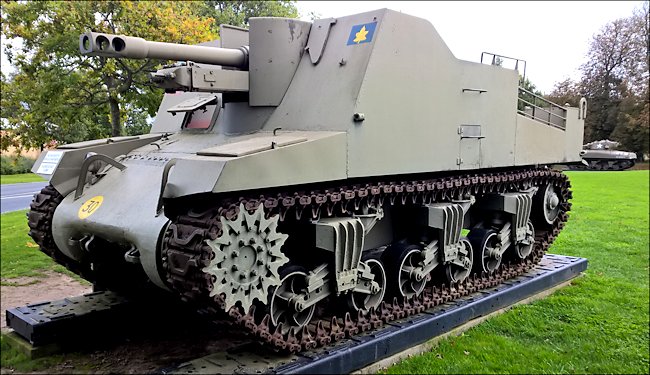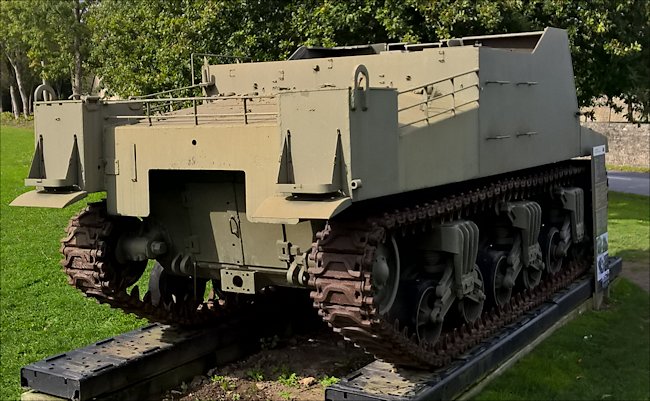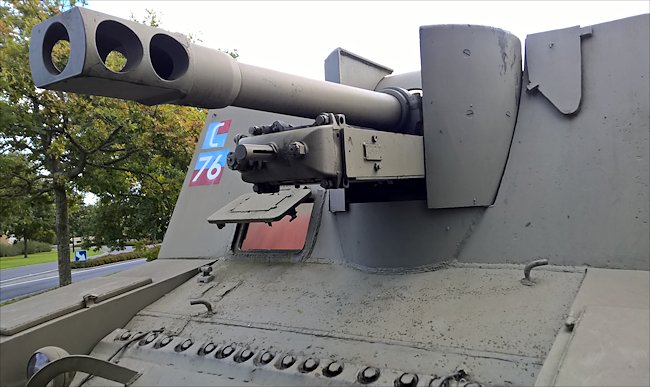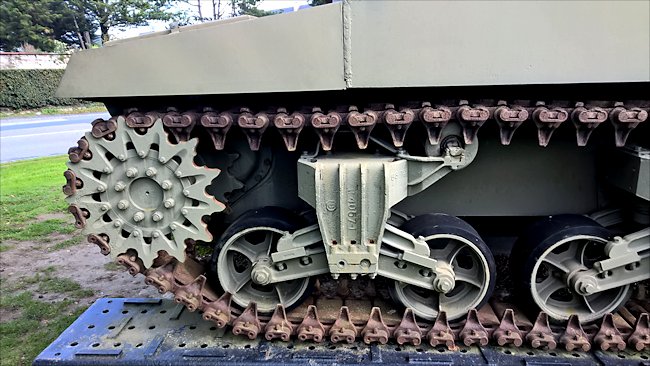Overlord Museum Sexton 25pdr SPG
The Sexton 25pdr Self-propelled Artillery Gun is one of three Allied D-Day surviving fighting machines outside the Overlord Museum in Colleville-sur-Mer, Normandy, France. The other two are a M10 Wolverine and a M4A1 Sherman Tank. This Sexton always stood outside the Musee Aout 1944 in Falaise. It was in a badly rusted condition. When that museum closed in 2012 it was restored for display outside the Overlord museum.

Sexton 25pdr Self-propelled Artillery Gun outside the Overlord Museum in Normandy
Location
The nearest village to the Overlord Museum is Colleville-sur-Mer. It is on the D514 costal road Hameau du Bray. You cannot miss it as there is a M4A1 Sherman tank, M10 Wolverine Tank Destroyer and British Sexton self-propelled artillery gun outside the front by the roundabout. It is very near Omaha Beach and the American Military Cemetery.
Specification
The first Sexton SPG was based on the American M3 Lee tank but then the Canadian built M4 Sherman Grizzly tank. It was powered by a Continental R-975 9-cylinder radial petrol engine that produced 400 hp. It had a top speed of 25 mph (40 km/h). It had a crew of 6: commander, driver, gunner, gun-layer, loader and radio operator. They were protected from small arms fire, high explosive and mortar shell shrapnel by armour that ranged in thickness from 15 mm to 32 mm.
The gun was an Ordnance QF 25-pounder (87.6mm) Mk II. The Sexton carried 105 rounds, mainly high explosive HE shells. Some were smoke rounds and a few were armour piercing AP rounds incase of surprise attack by a German tank. For self defence the Sexton crew were issued with two 0.303 (7.70mm) Bren Light machine guns.

This Sexton 25pdr Self-propelled Artillery Gun and Overlord Museum are very near the American Military Cemetery and Omaha Beach
The 25pdr Gun
This British gun could fire high explosive artillery HE shells at enemy targets out of sight of the crew behind walls, buildings, hills, woods. This is called indirect fire. Forward observers would send back co-ordinates of new targets to be fired upon. The 25pdr could also fire at targets the crew could see. This is called direct fire.
The gun weighed almost two tons. It had a barrel length of eight feet. It could shoot a shell almost 12,000 metres (12km or 7.45 miles). The crew could fire between 5-6 rounds a minute. The addition of a muzzle brake fitted to the end of the gun for D-Day allowed for the firing of a super charged shell. When you engaged tanks you needed an extra amount of charge to give the shell enough velocity to pierce the tanks armour. Without the muzzle brake there would be too much stress on the gun. Firing super charged shells would reduce the life of the gun barrel.
When the gas behind a fired round exits the barrel the muzzle brake partially diverts some of the combustion gases at a sideways angle. This reduces the recoil and stress on the gun.

The large muzzle brake fitted to the end of the Sexton's 25pdr Gun helped it reduce recoil and extend the working life of the barrel.

Sexton 25pdr Self-propelled Artillery Gun used the M4 Sherman Grizzly tank chassis.
D-Day 1944 books

